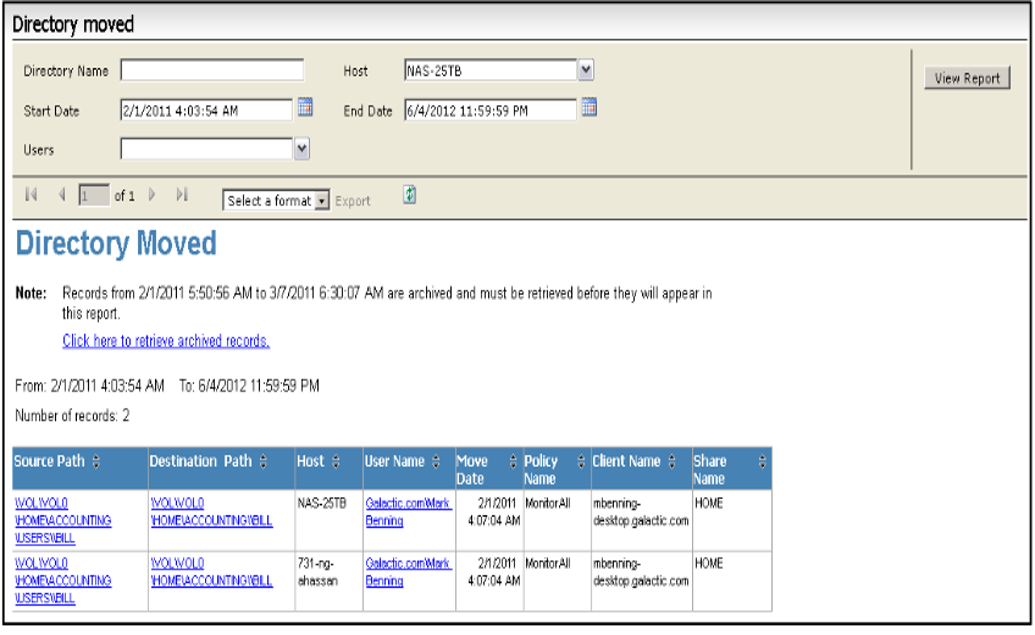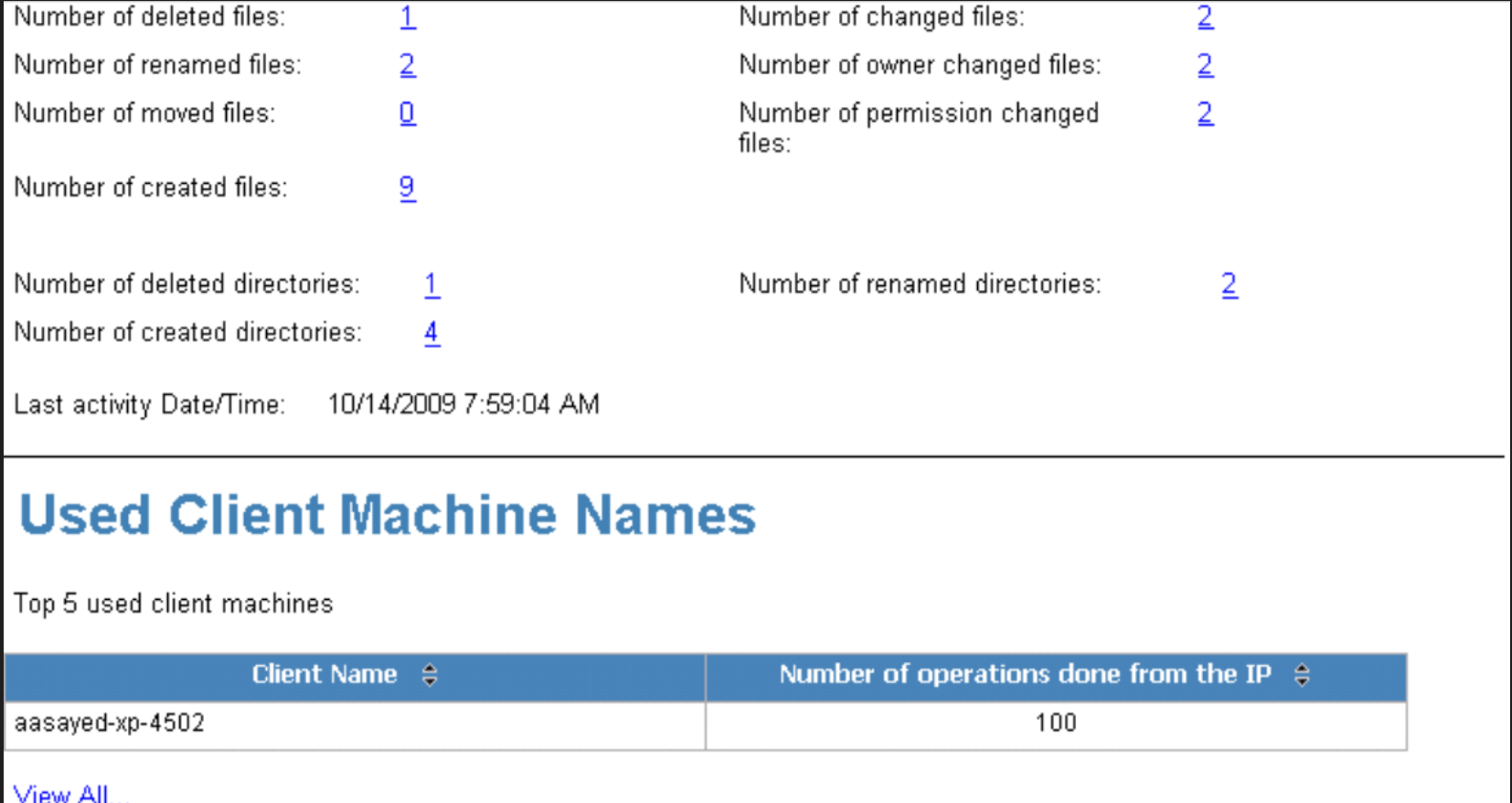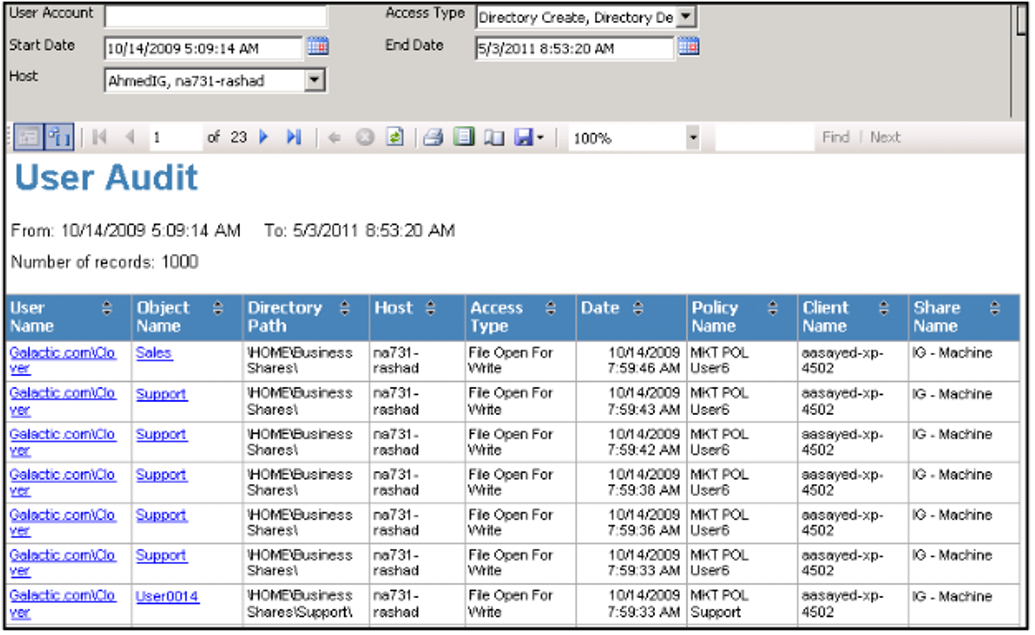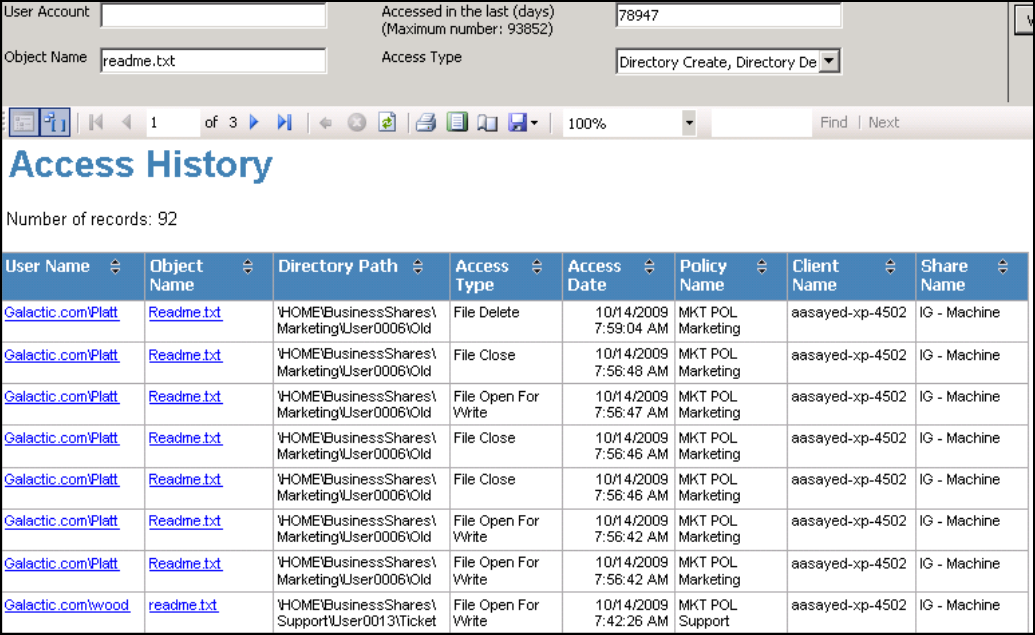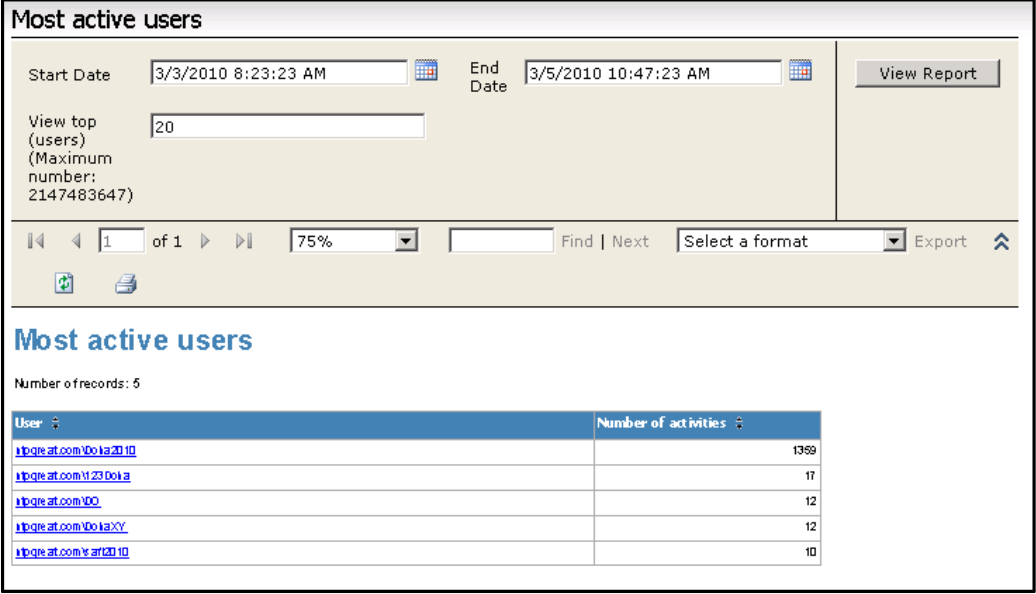Reports
The Superna Data Security Essentials reporting tool allows you to view the file and directory operations that took place at your environment in an easy and efficient display. Reports are categorized by user, file, policy, and folder.
To view Superna Data Security Essentials Reports, please follow the following steps:
-
Run Superna Data Security Essentials Reports by clicking Start > All Programs > Superna Data Security Essentials > Data Security Essentials Reports.
-
Select Report Type In the left pane, click the report type you want to display.
-
Specify Search Criteria In the upper pane, specify the search criteria, then click View Report.
-
Check Report Output In the lower pane, check the report output.
-
Export the Report Superna Data Security Essentials also allows you to export the report to different formats. These include XML, CSV, TIFF, PDF, Web Archive, or Excel.
Listed as follows are the different types of reports provided by Superna Data Security Essentials:
User Reports
The User Reports category has four different views: User Summary, User Audit, Access History, and Most Active Users.
-
User Summary This report allows you to search by username. Clicking on a specific user name, you can review the count of each operation performed, including the count of the deleted/renamed/moved files, the count of the created/changed/owner changed/permission changed files, the count of the created/deleted directories, and the count of the renamed directories files. In addition, it displays a list of the most-used client names, along with the count of operation(s) performed using the specified IP address.
-
User Audit This report allows you to review all the file and directory operations performed by user(s). The report input is the user account, access type, date range, and host name. The report displays the user’s name, the object name, the directory path, the host name, the operation performed, the date the operation was performed, the policy name, the client, and the share name within the specified criteria.
-
Access History This report allows you to review all the file and directory operations performed within a specified number of days. The report input is the user account, number of days accessed, file name, and access type. The report displays the user’s name, the object name, the directory path, the operation performed, the date the operation was performed, the policy name, the client name, and the share name within the specified criteria.
-
Most Active Users This report allows you to review the most active users with the users’ activities sorted in a descending or ascending order. The report input is the date range and the number of most active users to view. The report displays the user name and the number of activities performed by this user within the specified criteria.
File Reports
The File Reports category has nine different views: File Summary, File Audit, Files Changed, Files Deleted, Files Renamed, Files Created, Deletion Compliance, Owner Changed, and Permission Changed.
-
File Summary This report allows you to review the count of all the audited files. It also displays a breakdown for the count of deleted, renamed, created, or changed files. You can click the count next to any file operation to display a detailed list of the specified file operation.
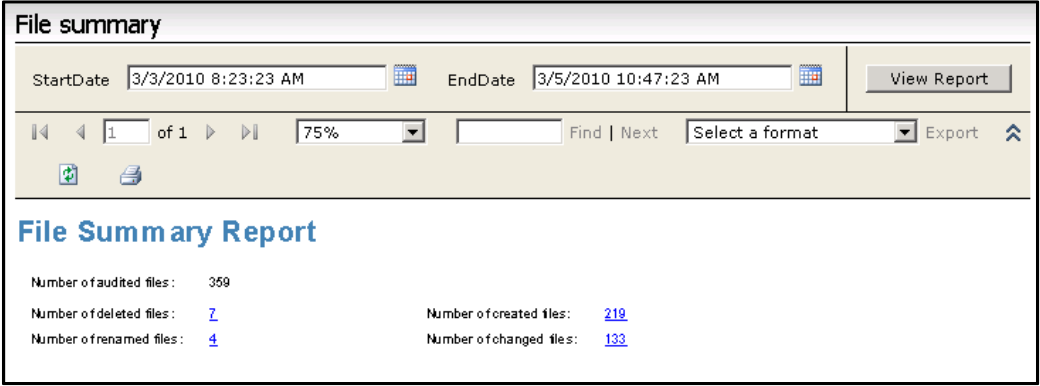
-
File Audit This report allows you to review all the file operations performed. The report input is the file name, host name, file operation, file type, and date range. The report displays the file name, the directory name where the specified file is located, the user name accessing the file, access type, access date, the name of the policy applied on the directory, the client name, and the share name within the specified criteria.
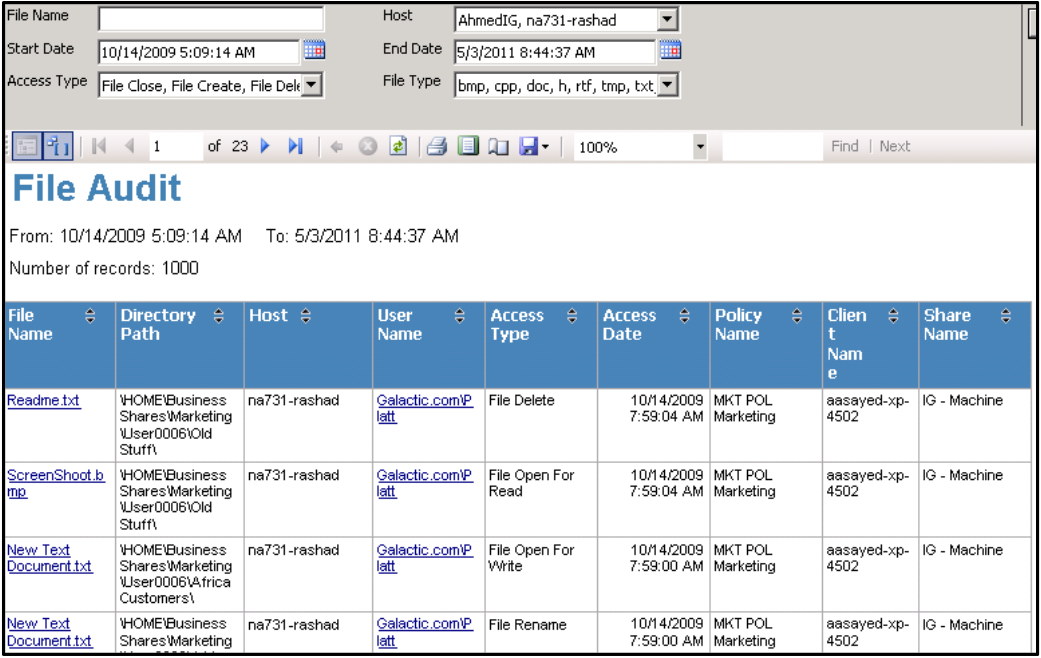
-
Files Changed This report allows you to view all the changed files. The report input is the file name, host name, date range, and file type(s). The report displays the file name, directory path in which the file is located, the user name accessing the file, the access type, the access date, the name of the policy applied, the client name, and the share name within the specified criteria.
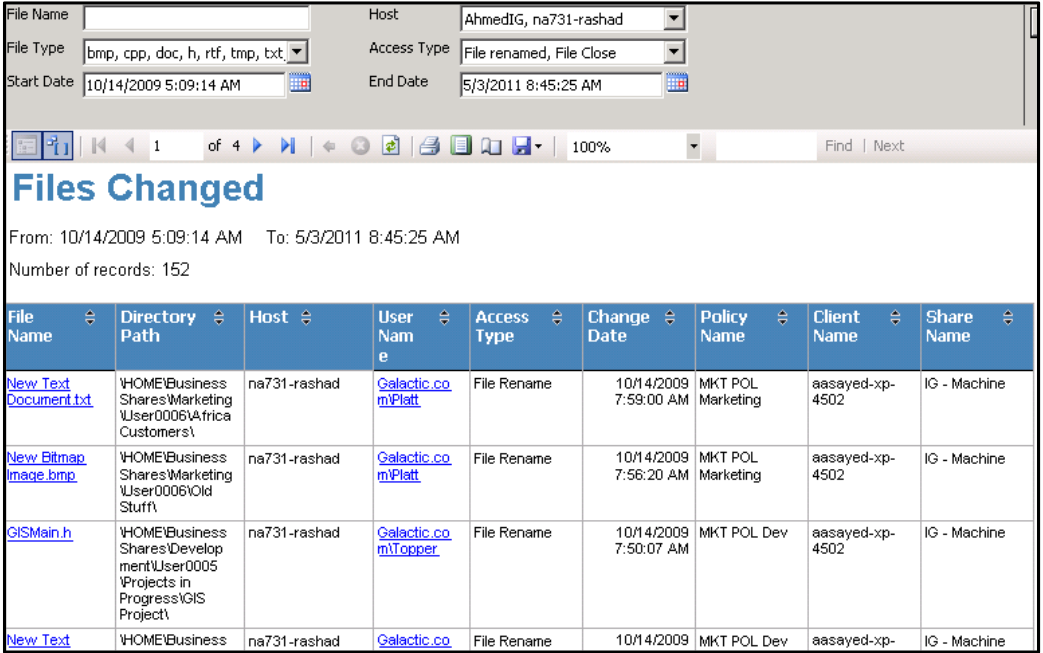
-
Files Deleted This report allows you to review all the files that have been deleted. The report’s input is the file name, host name, date range, and file type. The report displays the file name, the directory path in which the file was located, the user name, the date the file was last accessed, the policy name, the client name, and the share name within the specified criteria.

-
Files Renamed This report allows you to review all the files that have been renamed. The report’s input is the file name, host machine name, date range, and file type. The report displays the original file name before the change, the new file name after the rename, the directory path in which the file is located, the user name, the date the file was accessed, the policy name, the client name, and the share name within the specified criteria.

-
Files Created This report allows you to review all the files that have been created. The report’s input is the date range, file name, file type, and user account. The report displays the file name, the directory path in which the file exists, the user name, the access type (which is “file create”), the access date, the policy name, the client name, and the share name within the specified criteria.
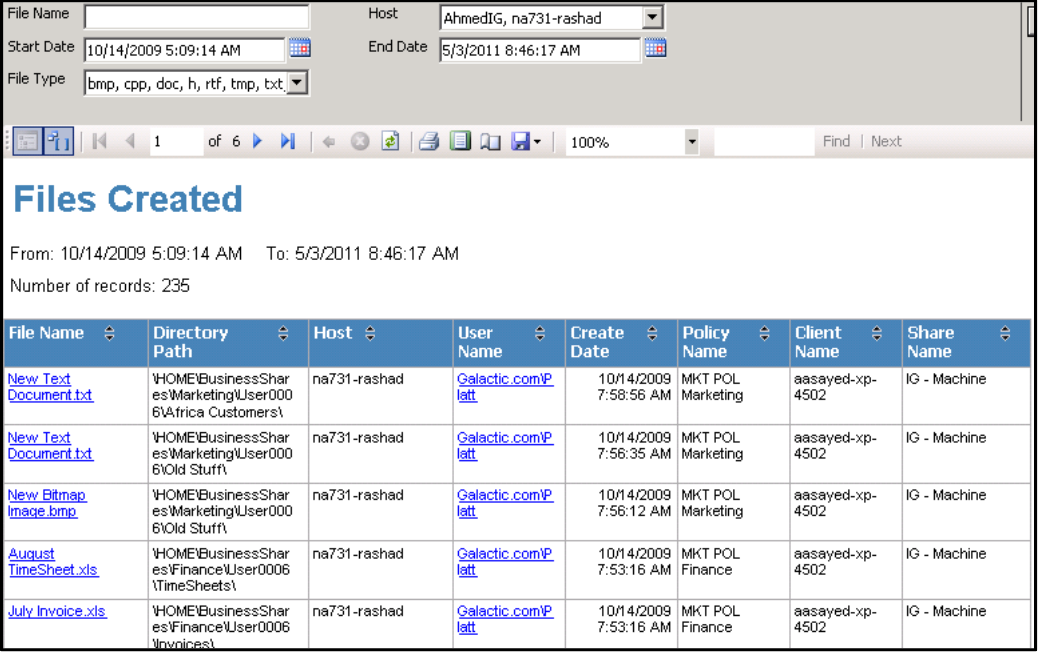
-
Files Moved This report allows you to review all the files that have been moved. The report’s input is the date range, file name, file type, and host name. The report displays the file name, the source path and the destination path of the moved file, the host name, the date on which the file was moved, the policy name, the machine IP address, and the share name within the specified criteria.
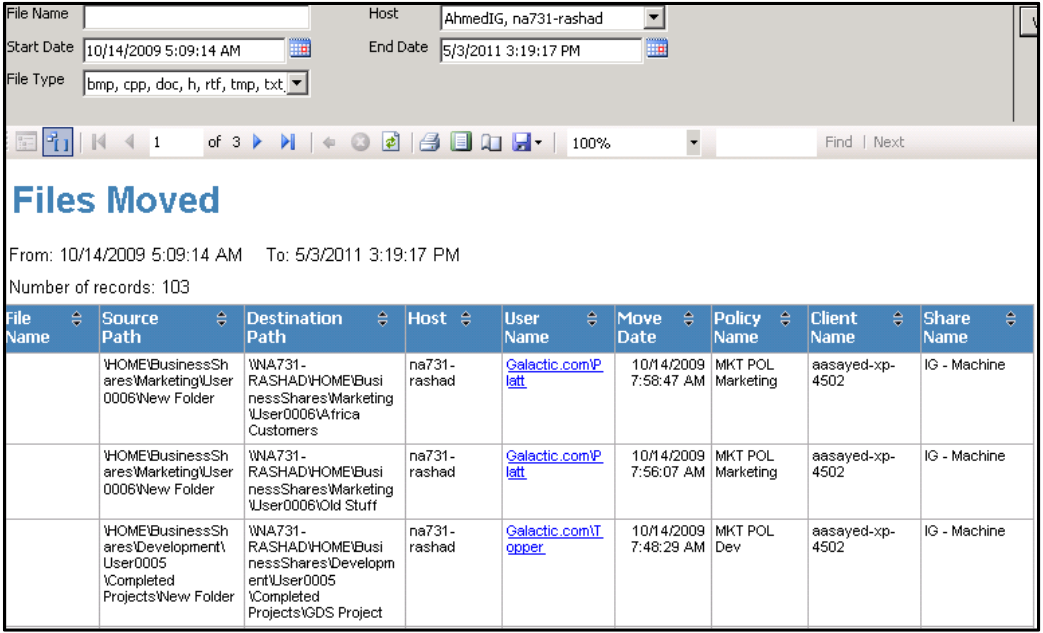
-
Deletion Compliance
This report allows you to review the files deleted over the specified compliance period. The report's input is the compliance period in months, host name, and file type. The report displays the files deleted over the specified period.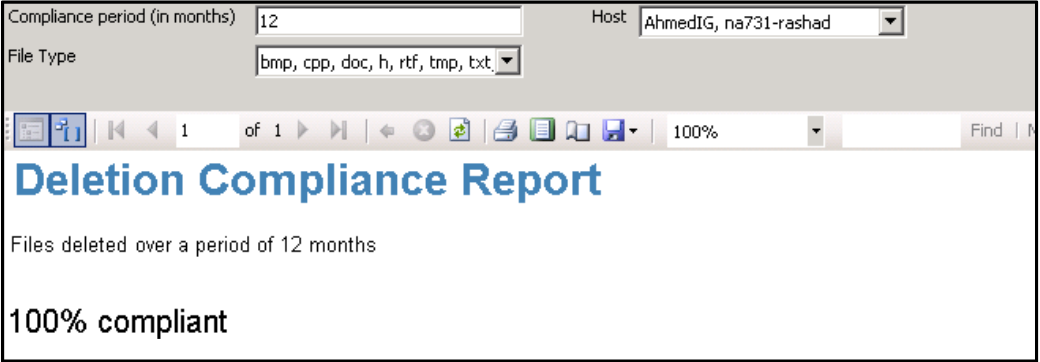
-
Owner Changed This report allows you to review the file(s) whose owner(s) has changed. The report displays the name of the file whose owner has changed, the previous owner, the new owner, the host IP address, the user name, the policy name, the client, and the share name within the specified criteria.
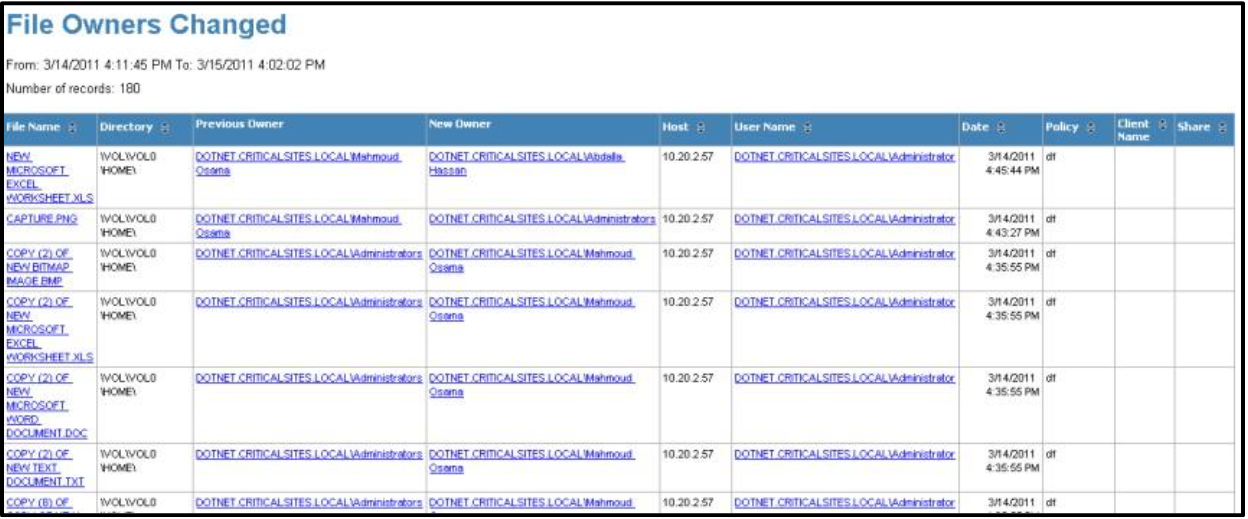
-
Permission Changed This report allows you to review the file(s) whose permission(s) has changed among user. The report displays the name of the file whose permission has changed, the directory where the file exists, the host IP address, the user name, the policy name, the client, and the share name, as well as the permission details within the specified criteria.
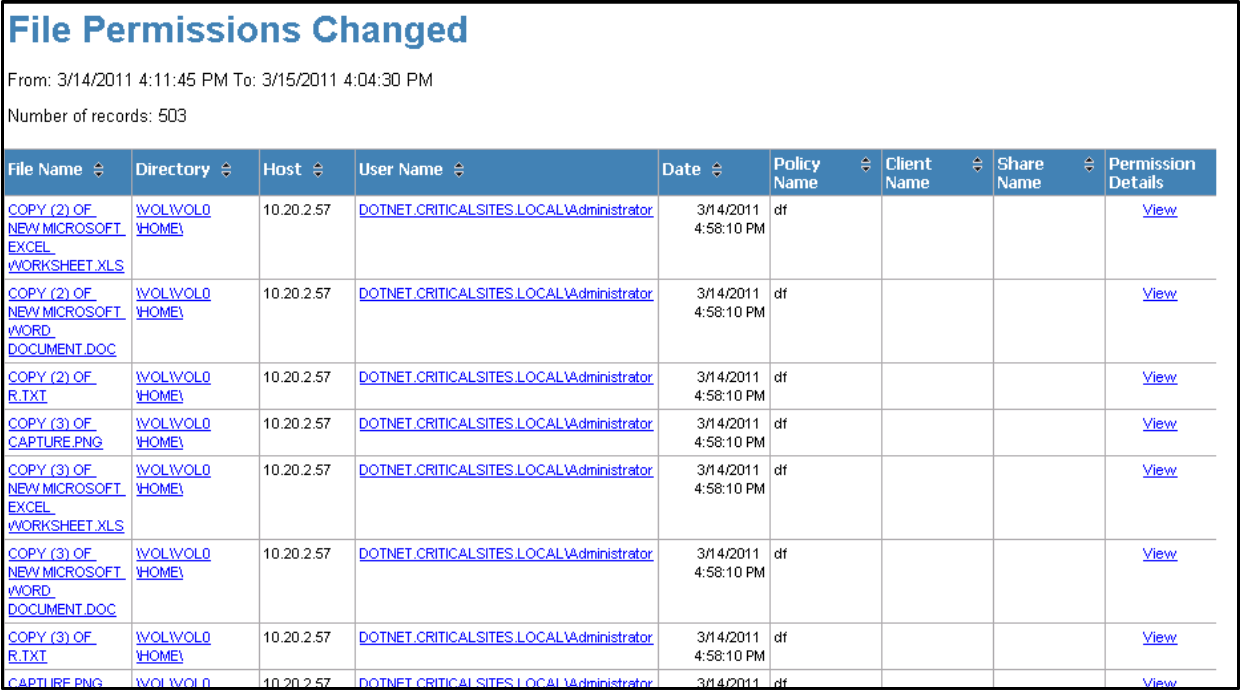
Clicking on the View link of the Permission Details field displays more details, as outlined below.
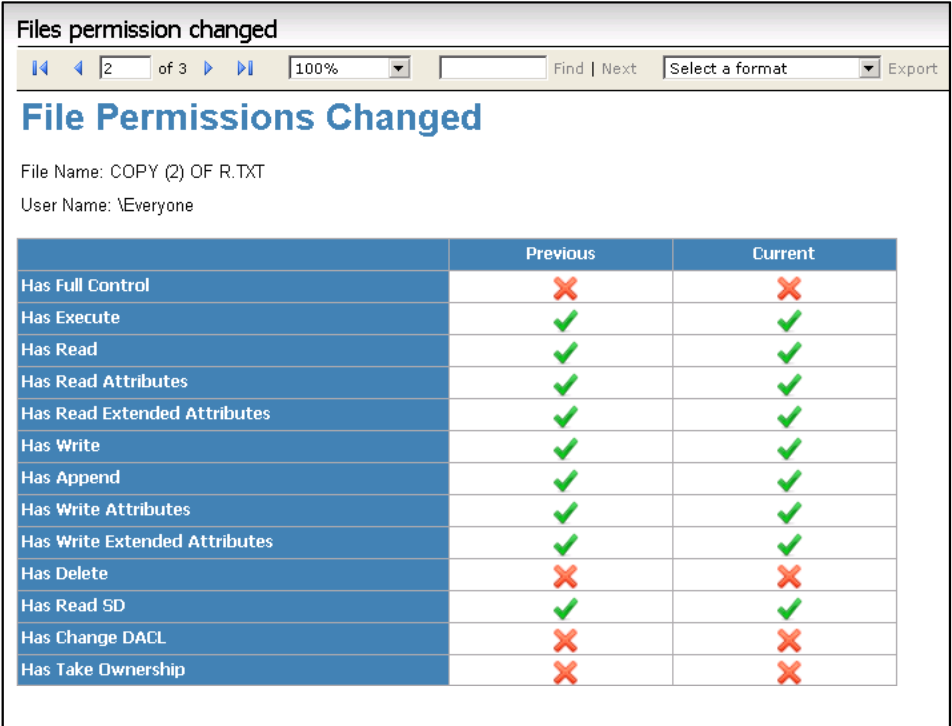
Policy Reports
The Policy Reports category has one view: the Policy by Date report.
- Policy by Date
This report allows you to review all the policy details within a certain date range. The report’s input is the date range and/or the policy name. The report displays the policy name, the user name, the directory path on which the policy applies, the access type, the access date, the machine IP address, and the share name within the specified criteria.
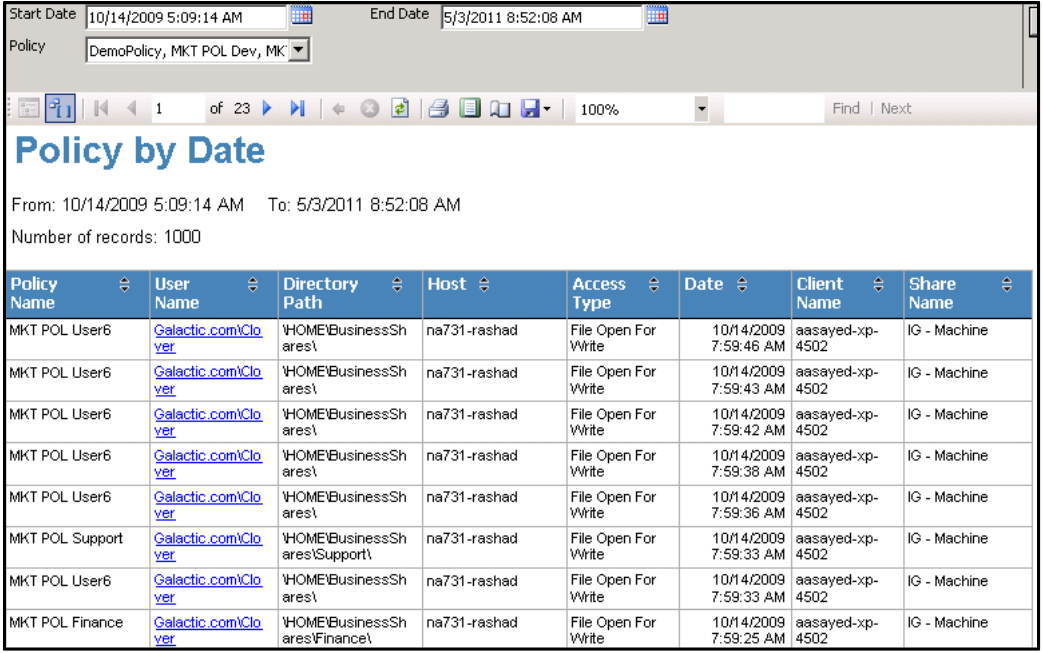
Directory Reports
The Directory Reports category has eight views: Directory Summary, Directory Audit, Directory Created, Directory Renamed, Directory Deleted, Deleted Files by Folder, Deleted Files Count by Folder, and Most Accessed Folders.
-
Directory Summary This report allows you to review the count of all the audited directories. It also displays a breakdown for the count of deleted, renamed, or created directories. You can click the count next to any directory operation to display a detailed list of the specified directory operation.
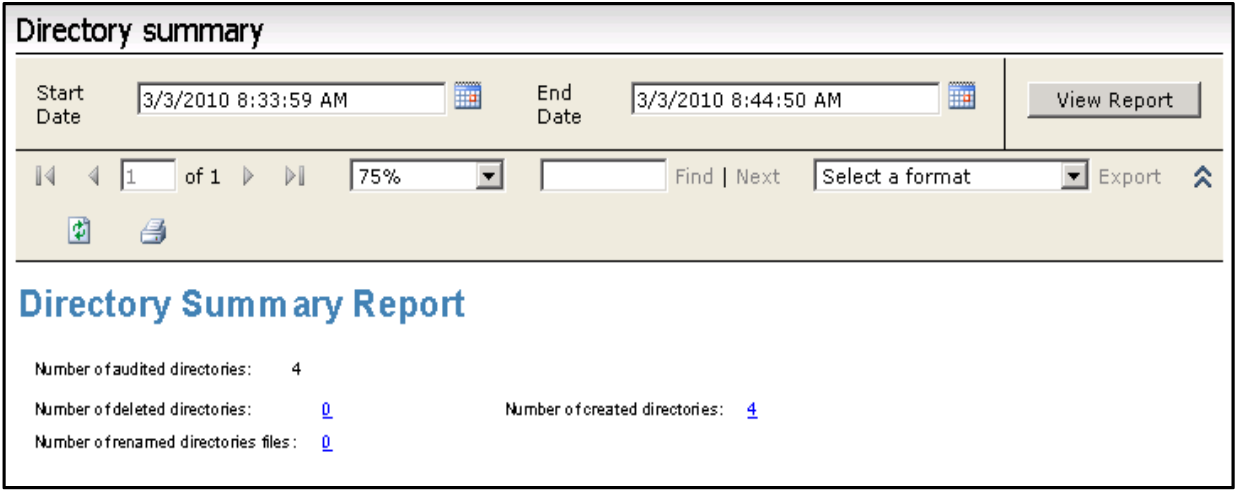
-
Directory Audit This report allows you to review all the directory operations performed. The report’s input is the directory name, host name, date range, and access type. The report displays the directory name, the user name accessing the directory, access type, access date, the name of the policy applied on the directory, the client name, and the share name. You can choose to display the previous information within a certain date range and/or for a certain access type(s) and/or for a certain directory name.
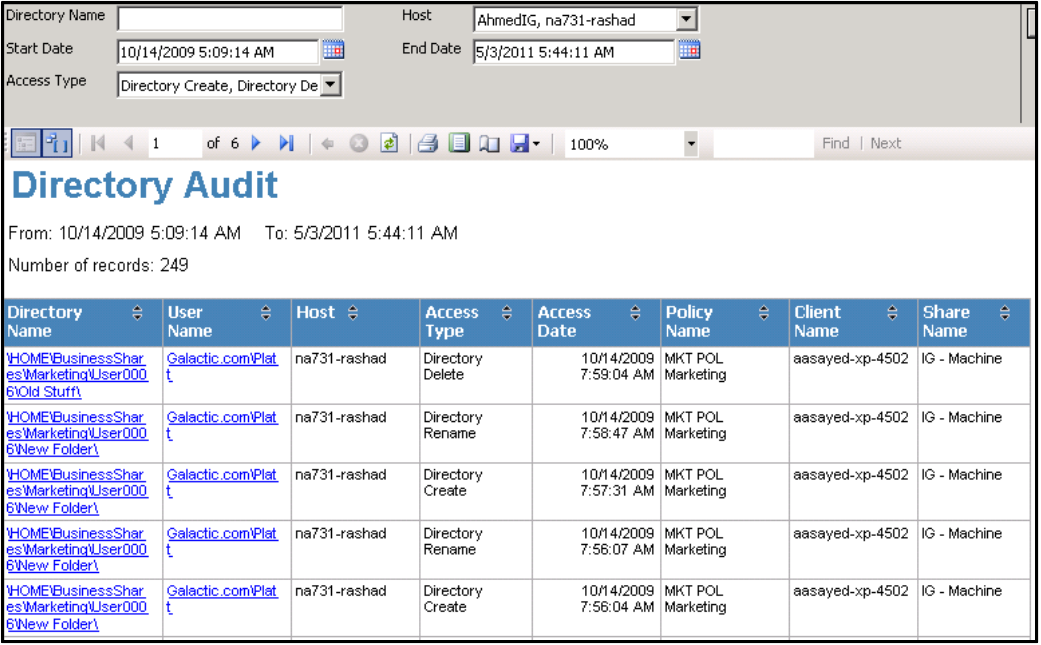
-
Directory Created This report allows you to review all the directories created. The report’s input is the date range, directory name, and host name. The report displays the name of the created directory, the user’s name performing the directory create operation, the date in which the directory was created, the name of the policy governing this directory creation operation, the IP address of the machine used to perform the directory create operation, and the share name based on the specified criteria.
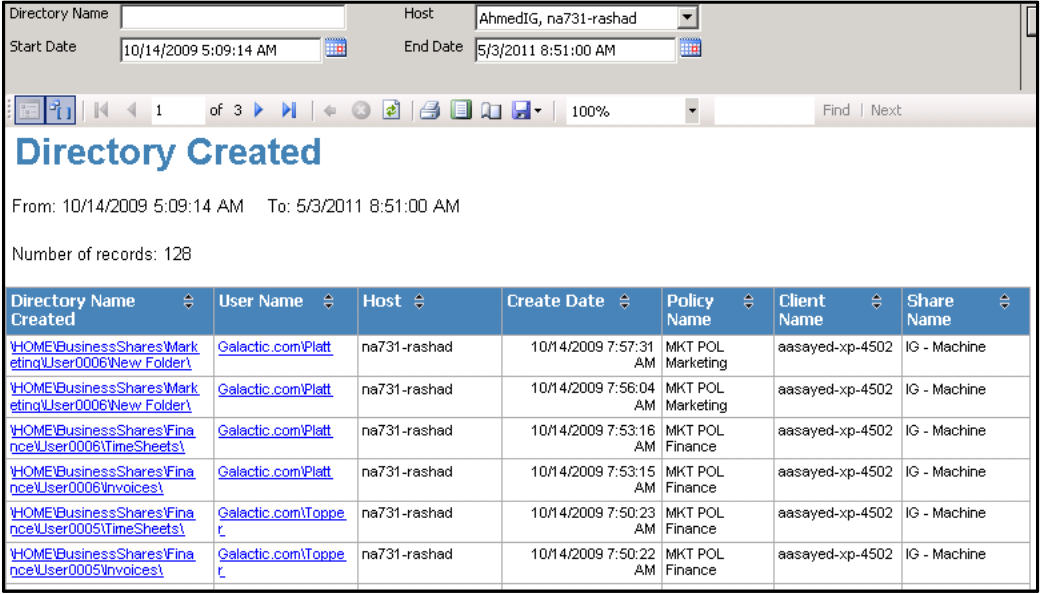
-
Directory Renamed This report allows you to review all the renamed directories. The report’s inputs are the directory name, host name, and date range. The report displays the original directory name before the renaming operation, the new directory name after renaming, the user’s name performing the directory rename operation, the date on which the directory was renamed, the name of the policy governing this directory rename operation, the IP address of the machine used to perform the directory rename operation, and the share name based on the specified criteria.
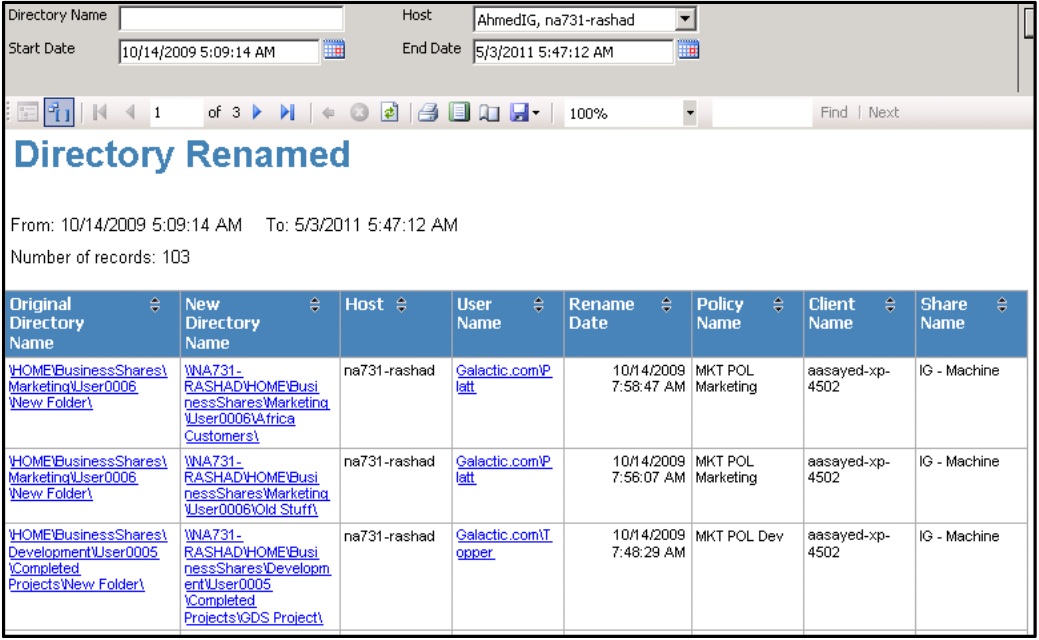
-
Directory Deleted This report allows you to review all the deleted directories. The report’s input is the date range, directory name, and host name. The report displays the name of the deleted directory, the user’s name performing the directory delete operation, the date in which the directory was deleted, the name of the policy governing this directory deletion operation, the client name used to perform the directory delete operation, and the share name based on the specified criteria.
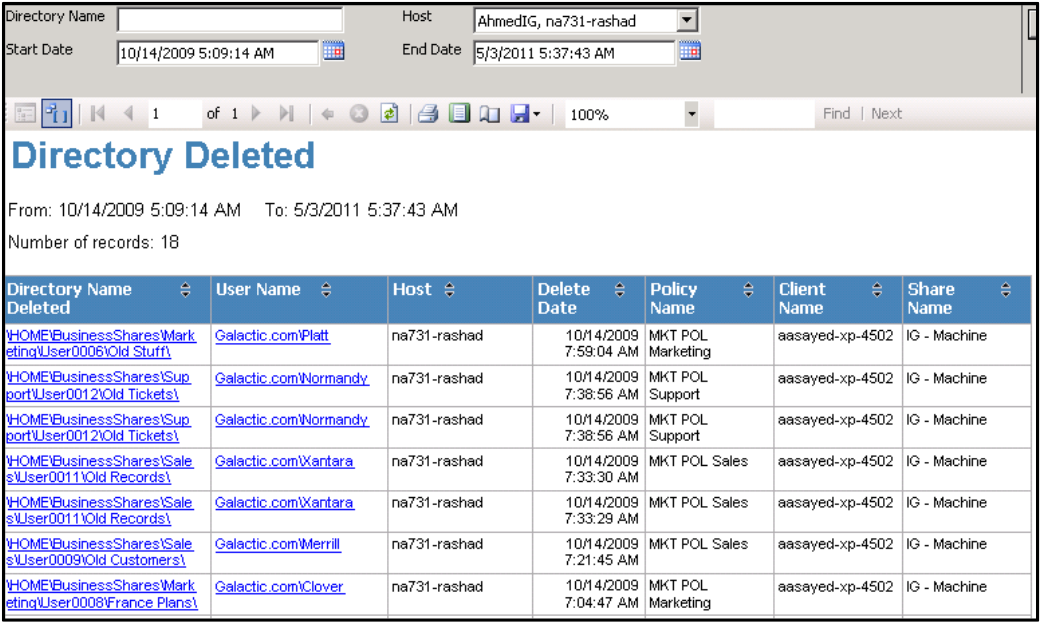
-
Deleted Files by Directory This report allows you to review all the deleted files grouped by directory. The report’s input is the directory name, host, and date range. The report displays the user’s name who has deleted the file(s), the path from which the file was deleted, the file name, the host name, the file size, the date on which the file was deleted, the client name used to perform the file delete operation, and the share name based on the specified criteria.
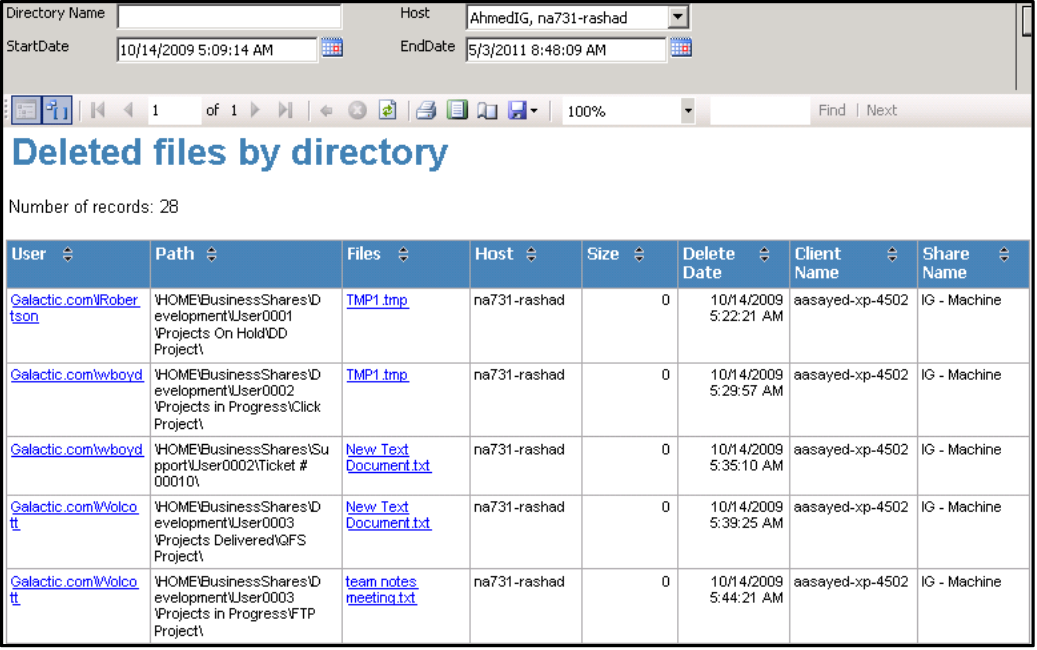
-
Deleted Files Count by Directory This report allows you to review the number of deleted files within a directory. The report’s input is the date range and directory name. The report displays the folder path and the number of files deleted within the specified directory/directories within the specified date range.
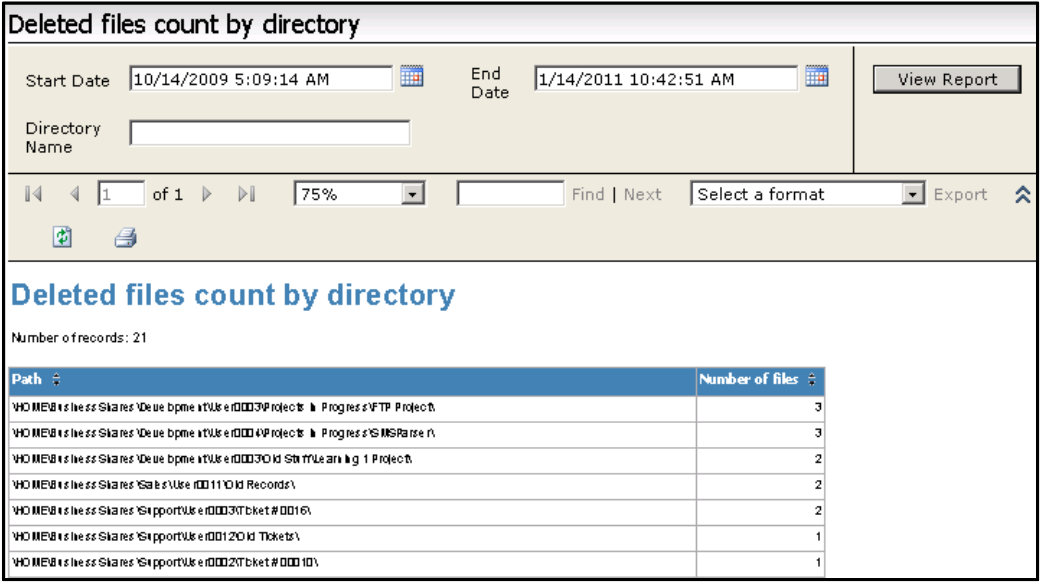
-
Most Accessed Directories This report allows you to review the most accessed directories. The report’s input is the date range and number of most accessed directories to display. The report displays the directory path and the number of times each directory was accessed.

-
Directory Owner Changed This report allows you to review all directories whose owners have changed. The report displays the directory name, the previous and new owners, the host IP address, the user name, the date, the policy name, the client name, and the share name based on the specified criteria.

-
Directory Permission Changed This report allows you to review all directories whose permissions have changed. The report displays the directory name, the host IP address, the user name, the date, the policy name, the client name, the share name, and the permission details based on the specified criteria.
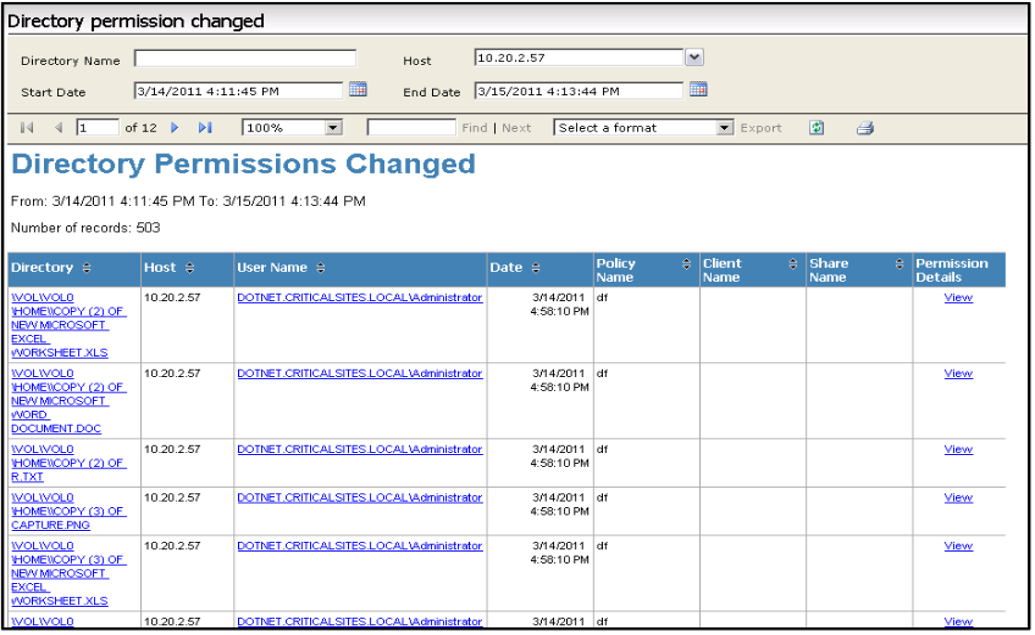
-
Directory Moved This report allows you to review all directories that have moved. The report displays the source path, the destination path, the host name, the user name, the date the directory was moved, the policy name, the client name, and the share name.
